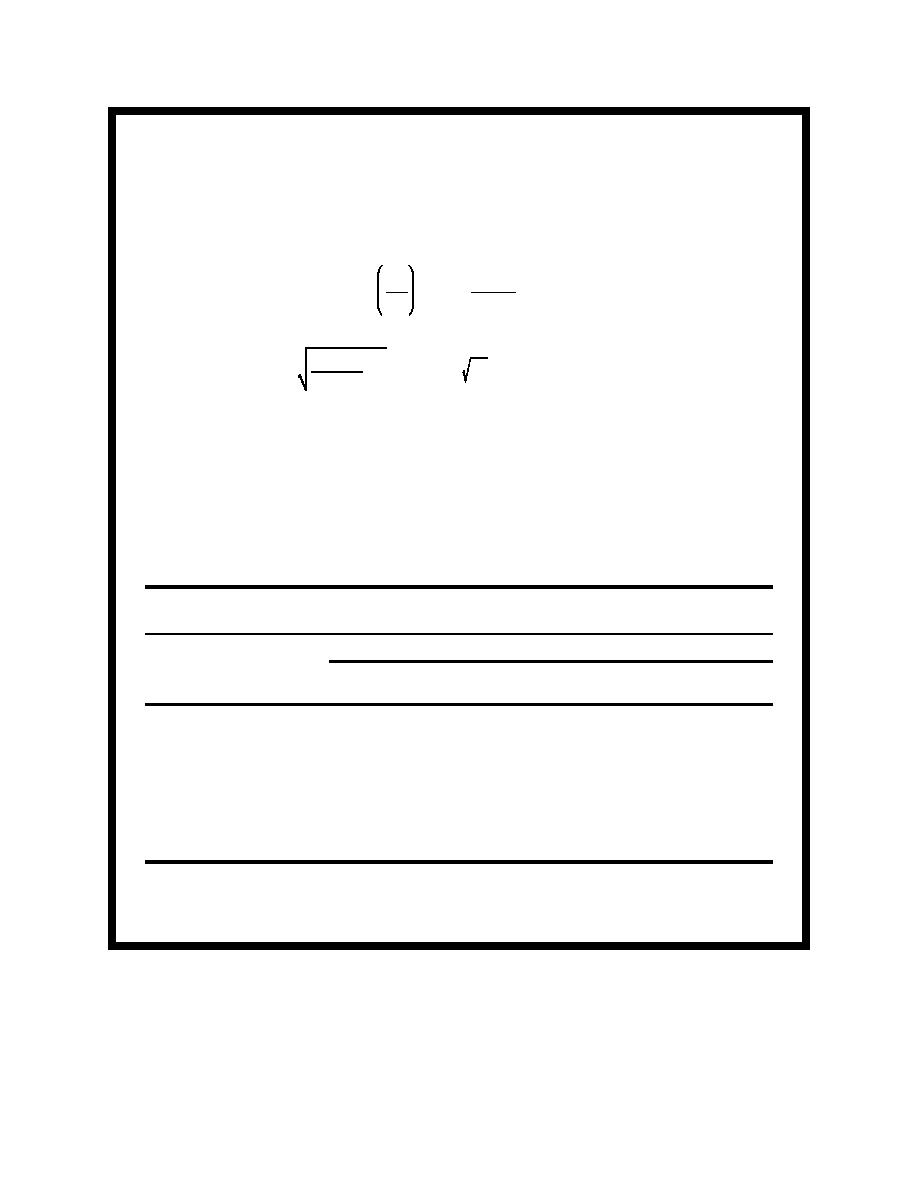
EM 1110-2-1100 (Part II)
30 Apr 02
Example Problem II-8-2 (Continued)
Appropriate values for d and T are more subjective. An opposing current amplifies wave height. The amount of
amplification increases as Ω increases (Figure II-8-31). A value for T can be determined by considering that any
wave period consistent with the observed events is a likely possibility. Thus the smallest reasonable Tp (designated
Tpmin), giving the largest likely value of Ω can be used. The largest observed equivalent deepwater wave steepness,
0.025 (Table II-8-13), can be used to estimate Tpmin as follows:
)
H0)
2π H0
0.025 '
'
L0
2
g Tpmin
max
(II-8-9)
2π
)
)
)
H0 ' 0.506 H0
Tpmin '
(H0 in cm)
0.025 g
Return period values of H0' are given in Tables II-8-18 and II-8-19. For each return period, a maximum depth
(djetty from Table II-8-18) and a minimum depth (10 m, corresponding to MLLW) were used for calculation, as
summarized in Table II-8-22. Maximum depth cases relate to jetty design and minimum depth cases to toe design.
Values of RH ranging from 1.13 to 1.23 indicate that currents could increase wave heights at the jetty head by
between 13 percent and 23 percent. A wave height increase of this magnitude has a major impact on design. Since
available estimates of current speed are speculative and the methods used to assess their impact are highly
simplified (uniform current field, waves coming in opposite direction from current, etc.), a site-specific physical
model study would be required in practice to complete the hydrodynamic design.
Table II-8-22
Calculation of Wave Height Modification by Currents
Jetty Design
Toe Design (djetty=10 m)
Tr
Tpmin
H0'
F
RH
djetty
F
RH
Ω
Ω
(yr)
(sec)
(cm)
(m)
2
653
12.9
13.9
-0.26
0.58
1.23
-0.30
0.49
1.18
5
702
13.4
14.1
-0.26
0.56
1.19
-0.30
0.47
1.17
10
737
13.7
14.2
-0.25
0.55
1.17
-0.30
0.46
1.16
25
782
14.1
14.4
-0.25
0.54
1.15
-0.30
0.45
1.15
50
816
14.5
14.5
-0.25
0.53
1.14
-0.30
0.44
1.14
100
850
14.8
14.6
-0.25
0.52
1.13
-0.30
0.43
1.13
Example Problem II-8-2 (Sheet 19 of 21)
Hydrodynamic Analysis and Design Conditions
II-8-53


 Previous Page
Previous Page
